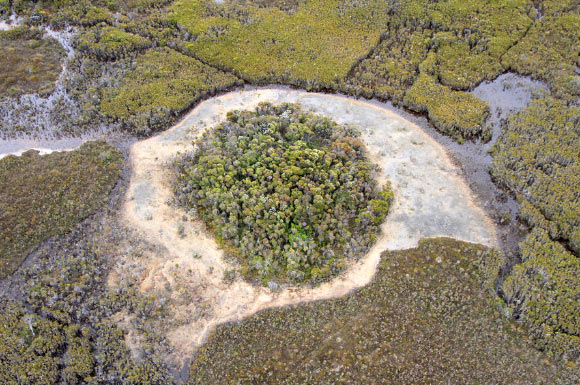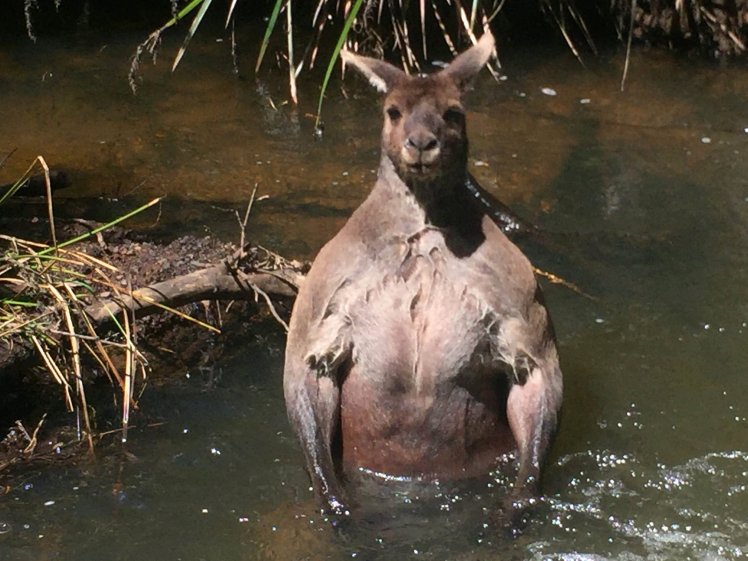
A team of Tasmanian researchers has uncovered rare, living stromatolites deep within the Tasmanian Wilderness World Heritage Area.
The team made the discovery during a survey of peat-bound karstic wetlands, an unusual type of swamp which occurs only in peaty soils underlain by limestone and similar carbonate rocks.
“This is an exciting discovery, because living stromatolites were previously unknown from Tasmania,” said Dr. Bernadette Proemse, a researcher at the University of Tasmania and the first author of a new paper in the journal Scientific Reports describing the discovery.
“The discovery reveals a unique and unexpected ecosystem in a remote valley in the state’s south west.”
“The ecosystem has developed around spring mounds where mineral-rich groundwater is forced to the surface by geological structures in underlying limestone rocks.”
“The find has proved doubly interesting, because closer examination revealed that these spring mounds were partly built of living stromatolites.”
Stromatolites are the oldest evidence for life on Earth, but modern living examples are rare.
Well-known living examples are shallow marine stromatolites in Hamelin Pool, Shark Bay, Western Australia, and the shallow subtidal stromatolites in Highborne Cay, Bahamas. Other occurrences include saline lacustrine environments such as Storr’s Lake, Bahamas, a hyper-saline lake of the Kiritimati Atoll, Central Pacific, high-altitude Lake Socompa, Argentina, and supratidal pools along the coastline of South Africa.
“Stromatolites are laminated structures of microorganisms which have created layers of minerals using elements dissolved in the water in which they live. Fossil stromatolites are the oldest evidence for life on Earth — they first appeared 3.7 billion years ago,” said lead author Roland Eberhard, from the Department of Primary Industries, Parks, Water & Environment.
“They are very rare, because more advanced life forms such as aquatic snails feed on the microorganisms required to form them.”
DNA analysis indicates that the Tasmanian stromatolites are microorganism communities which differ from all other known stromatolites.
“We revealed that the bacterial community is dominated by Cyanobacteria, Alphaproteobacteria and an unusually high proportion of Chloroflexi, followed by Armatimonadetes and Planctomycetes, and is therefore unique compared to other living examples,” the researchers explained.
The discovery provides clues why stromatolites thrived for millions of years but then virtually disappeared from all but a few exceptional places on Earth.
“We believe that the highly mineralized water flowing from spring mounds is a critical factor in the ability of the stromatolites to survive in the Tasmanian wilderness, because it challenges other forms of life,” the authors said.
“This became obvious when we noticed that the mounds were littered with the shells of dead freshwater snails.”
“This is good for stromatolites because it means there are very few living snails to eat them. Fortuitously, these Tasmanian ‘living fossils’ are protected by the World Heritage Area and the sheer remoteness of the spring mounds,” Dr. Proemse said.














3.7 BILLION years? Ridiculous, nothing could last that long and still be recognizable. This is typical of the illuminati disinformation machine pumping out more blatant lies to decieve the gullible public. If you don’t know that dinosaurs lived alongside humans only 4000 years ago, then you need to get educated. Search “creation science” on YouTube.